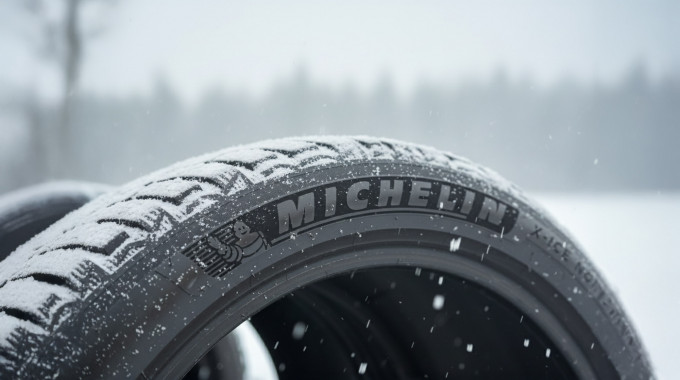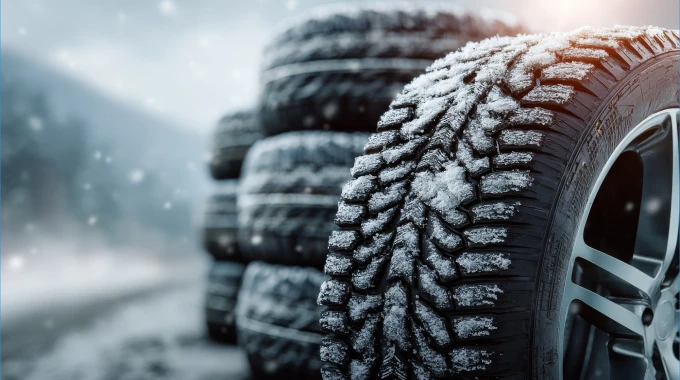
How to Register a Car in Nova Scotia: A Comprehensive Guide
Registering a vehicle in Nova Scotia is an essential step for car owners to legally operate their vehicles within the province.
The process involves obtaining the necessary documentation, paying applicable fees, and adhering to regulations. When purchasing a car from a dealership the dealer will usually help coordinate the registration. If you are buying privately you will be responsible for taking care of all the details yourself.
This article covers everything you need to know about car registration in Nova Scotia, including costs, procedures, and frequently asked questions.
Step-by-Step Guide to Registering a Car in Nova Scotia
- Obtain Proof of Ownership
You need to present valid documentation that shows you own the vehicle. This typically includes:
- A bill of sale if you purchased the car privately or from a dealership.
- A transfer document signed by the seller (found on the back of the existing registration certificate).
- If the car is financed or leased, provide the lease or financing agreement. - Obtain a Safety Inspection Certificate
All vehicles registered in Nova Scotia must pass a provincial safety inspection. This detailed inspection ensures the car meets road safety standards.
If the vehicle already has a valid Nova Scotia inspection sticker, you don't need a new inspection. However, if the vehicle is from out of province, you must have it inspected by a licensed inspection station in Nova Scotia. - Arrange Insurance
You must have valid automobile insurance from a licensed provider in Nova Scotia. The insurance policy must cover the vehicle you’re registering. - Gather Personal Identification
Bring a government-issued photo ID, such as a driver’s license or passport. - Calculate Fees and Taxes
Be prepared to pay registration fees and the Harmonized Sales Tax (HST), which is 15% of the vehicle's purchase price or fair market value. Fees vary based on the type of vehicle and whether you’re obtaining new plates or transferring existing ones. - Visit an Access Nova Scotia Office
You must complete the registration process in person at an Access Nova Scotia office. Bring all required documents, including:
- Proof of ownership.
- Safety inspection certificate.
- Proof of insurance.
- Personal identification. - Obtain Your License Plate and Registration Certificate
After completing the registration process and paying the required fees, you will receive:
- A Nova Scotia license plate (unless transferring an existing plate).
- A registration certificate, which you must keep in your vehicle at all times.
How Much Does It Cost to Register a Car in Nova Scotia?
For most passenger vehicles in Nova Scotia you will need to pay a one time vehicle registration fee of $13.20.
Every two years you will also need to renew your license plate for a fee of $80.15. This fee can vary depending on the type of license and vehicle.
Additional fees may include fees to the dealer you buy the car from, sales tax, and car inspection fees.
It’s advisable to check with Access Nova Scotia for the most up-to-date fees.
Can You Register a Vehicle Online in Nova Scotia?
Currently, Nova Scotia does not offer the ability to fully register a vehicle online. However, you can renew your vehicle registration online through the Access Nova Scotia website. For new vehicle registrations, you must visit an Access Nova Scotia office in person, bringing the required documentation.
Can a Vehicle Be Registered in Two Names in Nova Scotia?
Yes, a vehicle can be registered in two names in Nova Scotia. This is often done for joint ownership, such as between spouses or business partners. To register a vehicle under two names:
- Both parties must appear in person at an Access Nova Scotia office.
- Present valid identification for both individuals.
- Submit the vehicle registration application with both names included.
- Ensure both individuals sign the necessary forms.
Joint registration allows both owners to have equal legal ownership and responsibility for the vehicle.
How Do You Register a Car in Nova Scotia From Out of Province?
If you’re moving to Nova Scotia or buying a car out of province, registering your vehicle involves additional steps:
- Obtain a Safety Inspection Certificate:
Vehicles brought into Nova Scotia must pass a provincial safety inspection. Inspections are conducted at licensed inspection stations and typically cost $25-$50. - Provide Proof of Ownership:
Present the original bill of sale, lease agreement, or out-of-province registration showing that you own the vehicle. - Submit Proof of Insurance:
Provide a valid insurance policy from a licensed provider in Nova Scotia. - Pay Applicable Fees and Taxes:
You’ll need to pay the registration fees and Harmonized Sales Tax (HST), if applicable. - Visit Access Nova Scotia:
Submit all documentation and pay fees at an Access Nova Scotia office. You’ll receive your Nova Scotia license plate and registration certificate.
How Long Can You Drive With an Out-of-Province License Plate in Nova Scotia?
Temporary visitors, such as tourists or students, are allowed to drive with out-of-province plates in Nova Scotia for up to 90 days.
If you’re a new resident you must register the vehicle within 30 days of moving to the province.
How Do I Get a New License Plate in Nova Scotia?
Obtaining a new license plate in Nova Scotia is straightforward. Here’s what you need to do:
- Visit Access Nova Scotia:
Bring your vehicle registration, proof of insurance, and valid identification to your nearest Access Nova Scotia office. - Pay the Fees:
The cost to replace a license plate is $5.80 per plate. For vehicles that require two plates, even if only one has been lost or is damaged, is $11.60.
If you are getting a new license plate for the first time you would need to pay $80.15 (for regular passenger vehicles). - Choose a Specialty Plate (Optional):
Nova Scotia offers specialty plates, such as veteran plates or vanity plates, for an additional cost.
You’ll receive your new plate immediately upon completing the process.
How Do You Transfer Ownership of a Car in Nova Scotia and What Are the Required Vehicle Ownership Papers?
Transferring ownership of a vehicle in Nova Scotia is a straightforward process when you have the correct documentation and follow provincial regulations. By ensuring that all steps are completed and fees are paid, both the buyer and seller can smoothly transition the vehicle’s ownership. For more information or assistance, visit an Access Nova Scotia office or their official website.
Key Considerations When Transferring Ownership
- Joint Ownership: If two people are buying the car jointly, both names must appear on the bill of sale and registration documents.
- Outstanding Liens: Ensure there are no liens or debts registered against the vehicle. Buyers can check this through a Vehicle Information Report or by using the Canadian Vehicle Registry.
- Vehicle History Report: Obtaining a comprehensive used vehicle history report such as a CARFAX report will provide you with valuable historical information about the used car you wish to purchase, including any previous damage history or insurance claims made on the vehicle.
- Timelines: The buyer must register the vehicle in their name as soon as possible after purchase. Driving a vehicle without proper registration is illegal.
Steps for Transferring Ownership of a Car in Nova Scotia
1. Obtain a Bill of Sale
The bill of sale is a critical document for transferring ownership. It should include:
- The vehicle's make, model, and year.
- The Vehicle Identification Number (VIN).
- The sale price and date of sale.
- The buyer’s and seller’s names, addresses, and signatures.
You can use a pre-made template or create your own, but all details must be accurate and clear.
2. Complete the Vehicle Registration Transfer Section
On the back of the vehicle’s existing registration certificate, the seller must complete the transfer of ownership section, which includes:
- The name and address of the buyer.
- The sale date.
- The seller’s signature.
The seller should retain the detachable bottom portion as proof of the sale for their records.
3. Ensure a Valid Safety Inspection Certificate
- If the vehicle’s safety inspection sticker is expired, the seller must provide a valid safety inspection certificate.
- This certificate confirms that the vehicle meets Nova Scotia’s road safety standards and has been inspected by a licensed auto technician.
- The buyer will not be able to register the vehicle without it.
4. Arrange Insurance Coverage
Before transferring ownership, the buyer must secure a valid insurance policy for the vehicle. Proof of insurance will be required during the registration process.
5. Pay the Necessary Taxes and Fees
The buyer is responsible for paying the following during the transfer:
- Harmonized Sales Tax (HST): If buying from a private seller, the buyer pays HST (15%) based on the vehicle’s fair market value or purchase price, whichever is higher.
- Registration Fee: A fee for registering the vehicle in the new owner’s name. Fees vary depending on the type of vehicle.
6. Visit an Access Nova Scotia Office
Both the buyer and seller should visit an Access Nova Scotia office to complete the transfer of ownership. The buyer must bring:
- The signed bill of sale.
- The original vehicle registration certificate with the completed transfer section.
- A valid safety inspection certificate.
- Proof of insurance.
- Personal identification (e.g., driver’s license or government-issued ID).
7. Obtain a New License Plate (If Needed)
If the seller does not transfer their license plate to the buyer the buyer will need to purchase a new license plate.
If the buyer already owns a valid Nova Scotia plate, they may transfer it to the new vehicle for a nominal fee.
8. Receive the Updated Registration Certificate
Once the transfer process is complete, the buyer will receive a new registration certificate in their name. The seller’s responsibility for the vehicle ends at this point.
Are you looking to buy a new or used car in Nova Scotia? Canada Drives makes it easy to find a car you love and can afford. Get pre-approved online and get connected with a dealership in your area that will show you vehicles you qualify for—all you need to do is pick the one you want and drive away!







